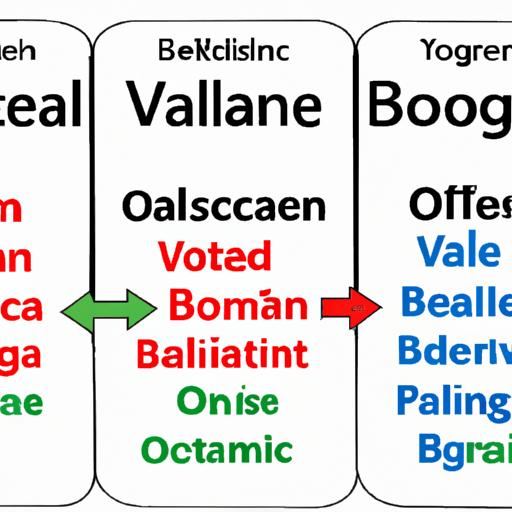In the vast realm of database systems, one key aspect that cannot be overlooked is the oracle boolean data type. But what exactly is the Boolean data type in Oracle, and why is it so important? In this article, we will explore the ins and outs of the Oracle Boolean data type, shedding light on its definition, purpose, and the significance of understanding and utilizing it in database systems.
A. Definition and purpose of the Boolean data type in Oracle
The Boolean data type in Oracle is a fundamental concept that represents logical values, primarily True or False. It allows developers and database administrators to store and manipulate binary data efficiently. With Boolean, you can express conditions, make decisions, and perform logical operations within your Oracle database.
But the significance of the Boolean data type doesn’t stop there. It plays a crucial role in various aspects of database management, from designing tables to executing complex SQL queries. Understanding how to leverage Boolean data type effectively can greatly enhance the accuracy and efficiency of your database operations.
B. Importance of understanding and utilizing Boolean data type in database systems
Imagine a scenario where you need to track the availability of products in an e-commerce database. You would want a simple and efficient way to represent whether a product is in stock or out of stock. This is where the Boolean data type shines. By utilizing Boolean, you can easily store and retrieve the state of each product, allowing you to make informed decisions and provide accurate information to your customers.
Moreover, Boolean data type empowers you to perform advanced filtering and querying operations in SQL. Need to retrieve all active users? Want to find orders with a specific status? Boolean data type enables you to express complex conditions and extract the precise data you need.
In a world driven by data, understanding and utilizing the Oracle Boolean data type is vital for database professionals. By harnessing its power, you can streamline your operations, optimize your queries, and ensure data integrity. So, let’s dive deeper into the world of Oracle Boolean and uncover its secrets together.
Understanding Boolean Data Type in Oracle

A. Syntax and characteristics of Boolean data type in Oracle
When working with the Oracle Boolean data type, it’s important to understand its syntax and characteristics. In Oracle, the Boolean data type is represented by the keywords BOOLEAN or BOOL. It follows a simple and intuitive structure, allowing you to declare Boolean variables, columns, and expressions within your database.
The Boolean data type in Oracle is highly versatile, enabling you to store and manipulate logical values efficiently. It uses a single bit to represent True or False, minimizing storage space and optimizing performance. This compact representation makes Boolean data type an ideal choice for scenarios where you need to store binary information.
B. Supported values and their significance (True/False, NULL)
The Oracle Boolean data type supports three distinct values: True, False, and NULL. The True value represents a logical true condition, while False represents a logical false condition. These values are crucial for making decisions, executing logical operations, and filtering data within your Oracle database.
But what about NULL? The NULL value in Boolean data type signifies the absence of a value or an unknown state. It can be useful when dealing with incomplete or missing information, allowing you to handle scenarios where the true or false condition cannot be determined.
Understanding the significance of these supported values is essential for accurate data representation and manipulation. By leveraging True, False, and NULL effectively, you can express intricate logic within your database and make informed decisions based on the available information.
C. Comparison with other data types and their practical applications
While the Boolean data type is unique in its ability to represent logical values, it’s important to consider how it compares to other data types in Oracle. One common comparison is between the Boolean data type and the Numeric data type, specifically the NUMBER(1) data type.
Although both can be used to represent binary values, there are notable differences. The Boolean data type offers a more intuitive and specialized approach for logical conditions, whereas the Numeric data type is a more generic option for storing numbers. Consider the practical application of your data and choose the appropriate data type accordingly.
By understanding the syntax, characteristics, supported values, and comparisons with other data types, you can effectively utilize the Oracle Boolean data type in your database systems. It’s time to dive deeper into working with Boolean data type and explore its practical implementation.
Working with Boolean Data Type in Oracle

Now that we have a grasp of what the Oracle Boolean data type entails, let’s explore how we can work with it effectively within our database systems. From creating tables with Boolean columns to inserting, updating, retrieving, and querying Boolean data, we’ll cover it all.
A. Creating tables with Boolean columns
When designing your database schema, incorporating Boolean columns can provide a concise and logical way to represent binary values. To create a table with a Boolean column in Oracle, you can specify the data type as BOOLEAN or NUMBER(1), where 1 represents the size of the column.
For example, let’s say you want to create a table to store customer information, including a column to indicate if the customer has subscribed to your newsletter. You can define the column as follows:
CREATE TABLE customers (
customer_id NUMBER,
name VARCHAR2(50),
newsletter_subscribed BOOLEAN
);B. Inserting and updating Boolean values in Oracle database
Once you have created your table with Boolean columns, you can insert and update Boolean values seamlessly. When inserting values into a Boolean column, you can use the keywords TRUE, FALSE, or NULL to represent the respective states.
INSERT INTO customers (customer_id, name, newsletter_subscribed)
VALUES (1, 'John Doe', TRUE);To update the Boolean value in an existing record, you can use the UPDATE statement:
UPDATE customers
SET newsletter_subscribed = FALSE
WHERE customer_id = 1;C. Retrieving and querying Boolean data from Oracle tables
Retrieving and querying Boolean data from Oracle tables is straightforward. You can use simple SELECT statements to fetch the Boolean values stored in your columns.
To retrieve all customers who have subscribed to the newsletter, you can execute the following query:
SELECT *
FROM customers
WHERE newsletter_subscribed = TRUE;Additionally, Boolean data types can be utilized in complex queries by combining them with logical operators such as AND, OR, and NOT. This allows for more precise and targeted data retrieval.
SELECT *
FROM customers
WHERE newsletter_subscribed = TRUE
AND customer_id > 100;By understanding how to create, insert, update, retrieve, and query Boolean data in Oracle, you can unlock the full potential of this data type and harness its capabilities to efficiently manage and manipulate your database.
Boolean Data Type in Oracle SQL Queries

When it comes to SQL queries in Oracle, the Boolean data type can be a powerful tool for precise filtering and expressing complex conditions. Let’s explore how you can leverage the Boolean data type in your SQL queries to retrieve the exact data you need.
A. Using Boolean data type in WHERE clauses for precise filtering
The WHERE clause in SQL is often used to filter data based on specific conditions. With the Boolean data type, you can enhance the precision of your filtering. For example, let’s say you have a table of employees, and you want to retrieve all employees who are currently active. You can use a Boolean column, such as “is_active”, to represent the employee’s status. Here’s an example query:
SELECT * FROM employees WHERE is_active = TRUE;By using the Boolean data type in the WHERE clause, you can easily filter out the inactive employees and focus on the active ones.
B. Employing Boolean operators (AND, OR, NOT) for complex conditions
Boolean operators (AND, OR, NOT) allow you to combine multiple conditions and create complex queries. By using these operators with the Boolean data type, you can express intricate logical relationships and retrieve data that meets specific criteria. For instance, let’s say you want to retrieve all products that are both in stock and have a price lower than $50. Here’s an example query:
SELECT * FROM products WHERE in_stock = TRUE AND price < 50;In this query, the AND operator is used to combine two conditions, resulting in a precise filtering of products based on stock availability and price range.
C. Examples of SQL queries utilizing Boolean data type in Oracle
To further illustrate the usage of Boolean data type in Oracle SQL queries, here are a few more examples:
-
Retrieving all orders that are either pending or delivered:
SELECT * FROM orders WHERE status = 'pending' OR status = 'delivered'; -
Finding all customers who have subscribed to the newsletter and have made a purchase:
SELECT * FROM customers WHERE newsletter_subscribed = TRUE AND total_purchases > 0; -
Filtering out products that are out of stock or discontinued:
SELECT * FROM products WHERE is_discontinued = TRUE OR in_stock = FALSE;
By incorporating Boolean data type and utilizing Boolean operators, you can construct SQL queries that precisely fetch the desired data from your Oracle database. Experiment with these concepts and unleash the full potential of Boolean in your SQL queries.
Conclusion
In conclusion, the Oracle Boolean data type proves to be an indispensable tool in database management. By grasping its definition, purpose, and practical applications, you can unlock a world of possibilities within your Oracle database.
Throughout this article, we have explored the significance of understanding and utilizing the Boolean data type in Oracle. From its role in representing logical values to its impact on SQL queries, Boolean data type offers immense value in ensuring data integrity and driving efficient operations.
To make the most of Boolean data type in Oracle, it is crucial to adhere to best practices. This includes ensuring data integrity and consistency by utilizing Boolean data type in appropriate scenarios. By properly documenting Boolean columns and their intended usage, you can enhance the clarity and maintainability of your database structure. Additionally, being aware of potential challenges and limitations of Boolean data type allows you to handle them effectively and avoid any pitfalls.
As we move forward, the future of Boolean data type in Oracle looks promising. Its versatility and efficiency make it an invaluable asset for developers and database administrators alike. By leveraging Boolean data type, we can continue to streamline database operations, improve performance, and make data-driven decisions with confidence.
So, embrace the power of the Oracle Boolean data type and unlock new dimensions of efficiency and accuracy within your database systems. Whether you’re a seasoned professional or just starting your journey in the world of Oracle, understanding and utilizing Boolean data type will undoubtedly elevate your database management skills.
Thank you for joining me on this exploration of the Oracle Boolean data type. Now, go forth and harness the power of Boolean!
